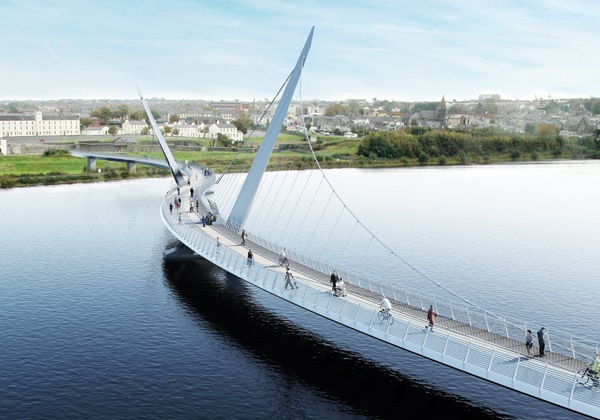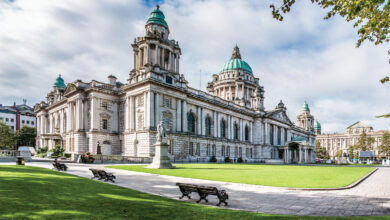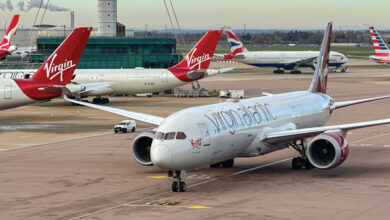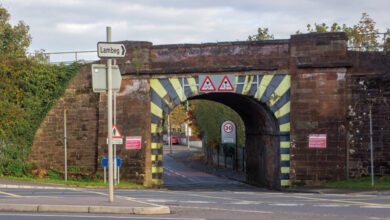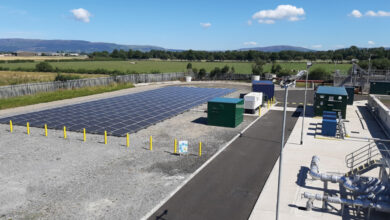Bridge over troubled water
“An embrace in the centre of the river” is how the Peace Bridge has been described by its designers. agendaNi takes a look at the impact the structure is expected to have on the maiden city.
With the potential it has to unite the Cityside and Waterside communities on either side of the River Foyle, the Peace Bridge will be an ‘S’ shape made from two identical curved suspension structures connected to opposing banks and overlapping in the middle.
Ilex Urban Regeneration Company managed the project and construction on the £13.5 million project began in January. The contract awarded to County Down company Graham Construction, who have also built the city’s Foyle Bridge, the Belfast Cross-Harbour Bridge and the Dargan Bridge in south Dublin.
The bridge will link the former military base at Ebrington to the Guildhall and cyclists and pedestrians should be able to cross it in October this year.
The EU Peace III programme financed the bridge, and, along with the Special European Union Programmes Body, chose the name Peace Bridge. The SEUPB believes the structure will tackle problems of separated communities by creating genuine new shared space. However, an unofficial online campaign on Facebook has been set up by SDLP MLA Conall McDevitt and press officer Ruairi O’Kane calling for the bridge to be called the Hume Bridge as a tribute to the city’s Nobel Peace laureate John Hume who they say “worked tirelessly to build bridges between our divided community.” It has generated 675 followers. Commenting on whether another name would be considered, a spokeswoman from Ilex said: “That is entirely within the gift of the European Union who funded the project.”
Since construction began in January eight jobs and four apprenticeships have been provided for local workers as part of the ‘Kickstart to Work’ employment programme.
For every £1 million of the project value a job will be created and for every £2 million an apprenticeship will be created because Ilex included a social clause in the construction contract. This is a welcome development according to the city’s Mayor, Paul Fleming who commented: “I am very pleased. Social clauses in construction contracts under the sustainable agenda are a concept that all government departments should be prioritising during their internal tender processes to ensure that communities benefit economically from the public and private investment in Derry over the next five to ten years.”
Martin McGuinness said it was his “sincere hope” that the bridge “will be a catalyst for change and will help transform this city and the local community in the widest sense.” He claimed that the Foyle has “for so long” been viewed as a boundary between communities on either side of the river.
“It will bring Ebrington into shared, public use for the first time in almost 170 years. Most importantly, it will enable the local community to reclaim this prime riverside location for their own enjoyment,” he added.
Social Development Minister Margaret Ritchie said: “This is great for the people of the North West. This new foot and cycle bridge will encourage all the citizens of Derry to have a renewed sense of pride in their city centre. On a practical level, it will create a safe, attractive and convenient route into the central area for pedestrians and cyclists.
“But in addition, the new bridge will literally bring people in the city together and underline our resolve to create a shared future in Derry and the North.”
Chairman of Ilex, Sir Roy McNulty, hopes the bridge will add to the ongoing regeneration of the walled city and revealed that a time-capsule will be placed in the Ebrington site to mark completion of the “iconic project” and to “represent the city’s history, its people, and their aspirations for the future.”

